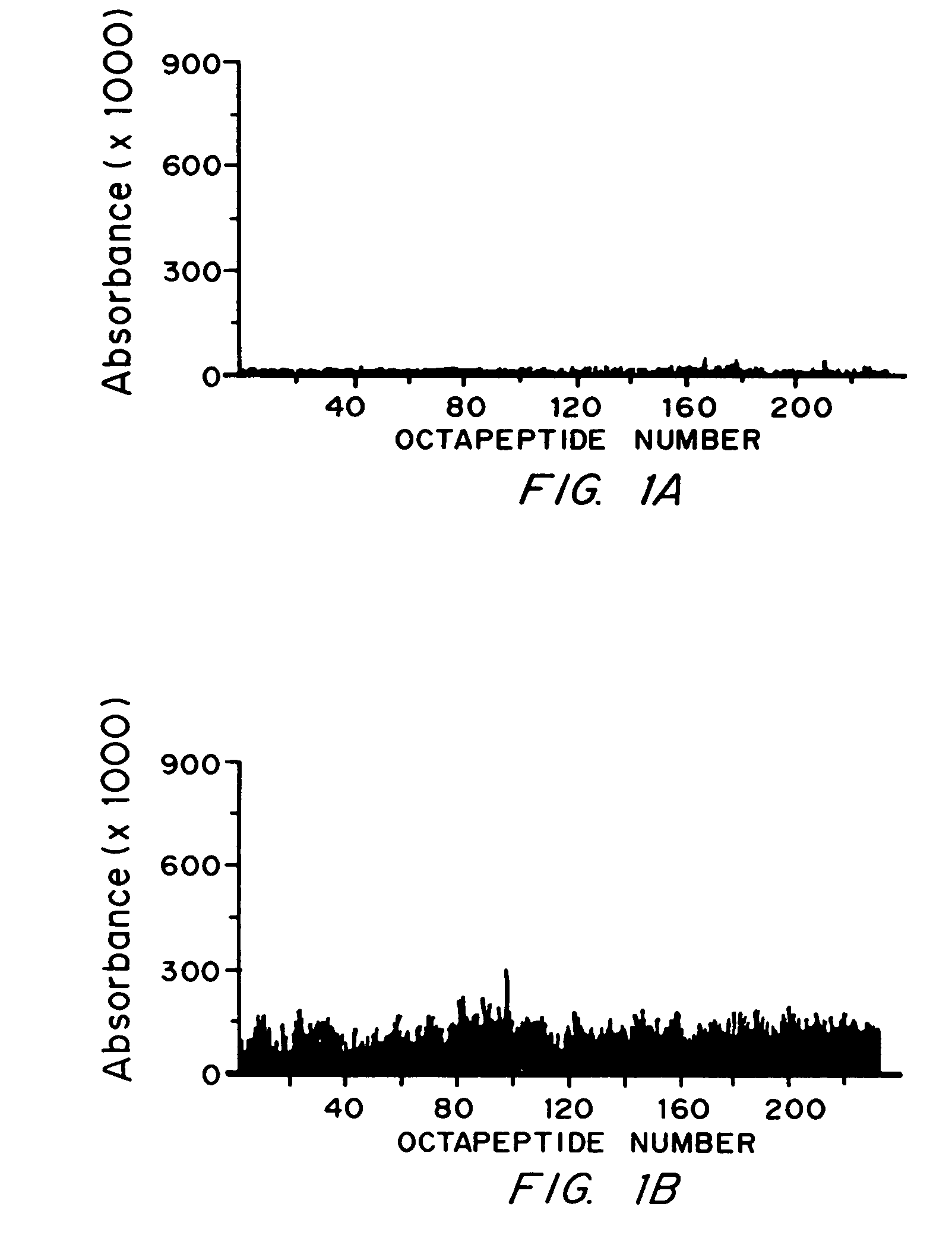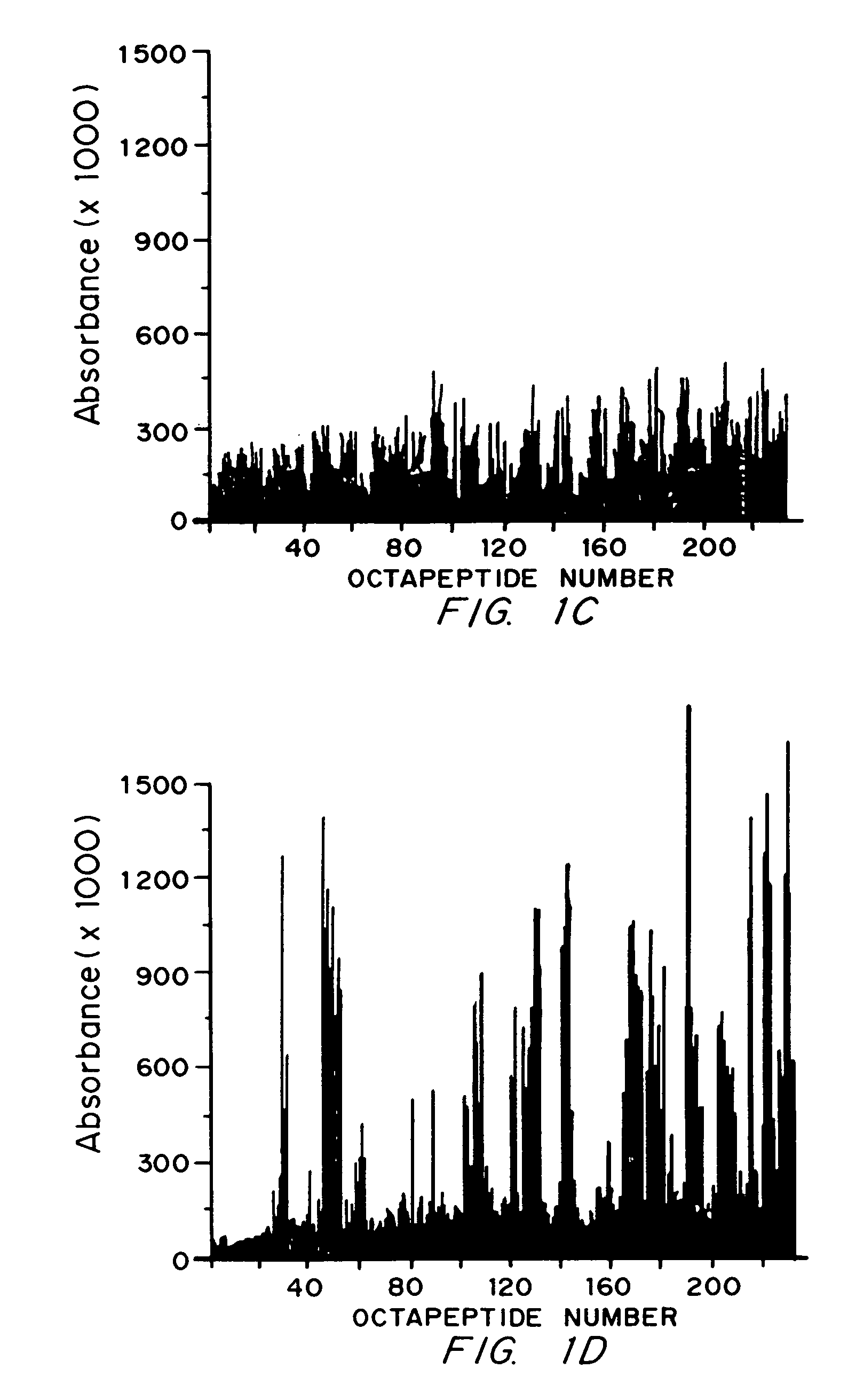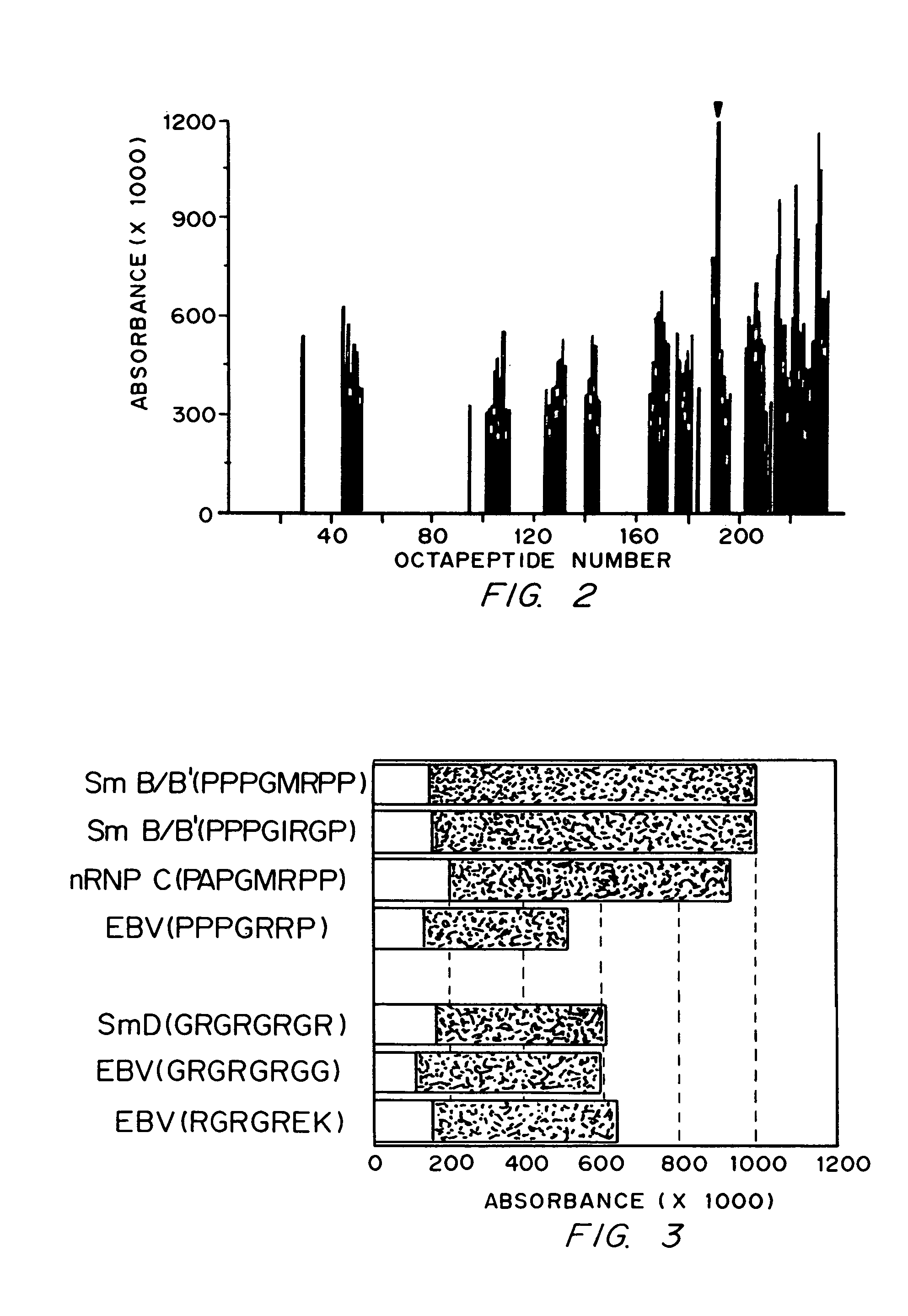Diagnostics and therapy of Epstein-Barr virus in autoimmune disorders
a technology of epstein-barr virus and autoimmune disorders, which is applied in the direction of immunological disorders, drug compositions, peptides, etc., can solve the problem that vaccines are not capable of inducing autoimmune diseases, and achieve the effect of encouraging autoimmunity
- Summary
- Abstract
- Description
- Claims
- Application Information
AI Technical Summary
Problems solved by technology
Method used
Image
Examples
example 1
The Relationship of Anti-Sm to Epstein-Barr Virus
[0089]The anti-Sm and anti-nuclear ribonucleoprotein (nRNP) autoantibody specificities have an Ouchterlony precipitin reaction of partial identity. This is because the epitopes bound are found on two antigens which share some, but not all, antigenic features. The Sm autoantigen may be found in association with the U1, U2, U5 or U4 / 6 spliceosomal particles. These are composed of specific U RNA and particular peptides. The nRNP autoantigen is composed of only U1 RNA and particular unique peptides. The anti-Sm antibodies bind to the B / B′ or D spliceosomal peptides in Western blot while the anti-nRNP autoantibodies bind 70K, A or C peptides (Lerner, M. R. and Steitz, J. A. Proc. Natl. Acad. Sci. USA 76:5495-5499 (1979); Hinterberger, M. J. Biol. Chem. 258:2604-2613 (1983); and Petterson, I. et al. J. Biol. Chem. 259:5907-5914 (1984)). (B / B′ and D are found in the U1, U2, U5 and U4 / 6 spliceosomal particles. A protein termed the N protein o...
example 2
Association of Seroconversion Against Epstein-Barr Virus and an Autoimmune Disease
[0111]Sera from lupus patients compared with controls were first tested for seroconversion against Epstein-Barr virus. There were a number of important considerations in designing these experiments. First, the older and more traditional assays for Epstein-Barr seroconversion were insufficiently specific. These assays are especially unreliable when applied to sera from lupus patients. Antinuclear autoantibodies in lupus sera often interfere with the test for Epstein-Barr seroconversion when an Epstein-Barr virus-infected cell line is used for the test resulting in both a positive test result for Epstein-Barr virus and for antinuclear antibodies involving the nuclear fluorescence of the cell line. Also, the infected cell line test for Epstein-Barr virus is often not positive in people known to have been infected with Epstein-Barr virus. Others have used such assays in patients with systemic lupus erythem...
example 3
Experiments to Evaluate Trivial and Artifactual Explanations for the Association of Epstein-Barr Virus Serologic Positivity with an Autoimmune Disease Related to the Source of the Test for Anti-Epstein-Barr Viral Capsid Antigen IgG Antibodies.
[0126]Perhaps, the association observed is explained by some artefact of the manufacturing process. Since there are two manufacturers who separately prepare the Viral Capsid Antigen and who use somewhat different procedures, a subset of the lupus patients and controls were evaluated using the test manufactured by Gull Laboratories (Salt Lake City, Utah).
[0127]The results from the Gull test for Epstein-Barr seropositivity were essentially identical to those obtained with tests manufactured by Clark Laboratories, Inc. Of the 43 patient sera tested, all were positive for Epstein-Barr virus IgG antibodies who were positive by the Clark assay. The one patient without antibodies to Epstein-Barr virus Viral Capsid Antigen by the Clark assay also had n...
PUM
| Property | Measurement | Unit |
|---|---|---|
| pH | aaaaa | aaaaa |
| pH | aaaaa | aaaaa |
| volume | aaaaa | aaaaa |
Abstract
Description
Claims
Application Information
 Login to View More
Login to View More - R&D
- Intellectual Property
- Life Sciences
- Materials
- Tech Scout
- Unparalleled Data Quality
- Higher Quality Content
- 60% Fewer Hallucinations
Browse by: Latest US Patents, China's latest patents, Technical Efficacy Thesaurus, Application Domain, Technology Topic, Popular Technical Reports.
© 2025 PatSnap. All rights reserved.Legal|Privacy policy|Modern Slavery Act Transparency Statement|Sitemap|About US| Contact US: help@patsnap.com



